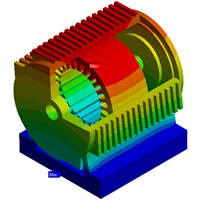Ansys Mechanical Premium
Ansys Mechanical Premium uses the Ansys Mechanical interface to deliver powerful finite element modeling capabilities in a way that you can use to make real structural engineering decisions. Mechanical Premium gives you access to the Ansys Mechanical solver with incredible scalability, wide industry adoption and superb support from a broad base of engineers around the globe




